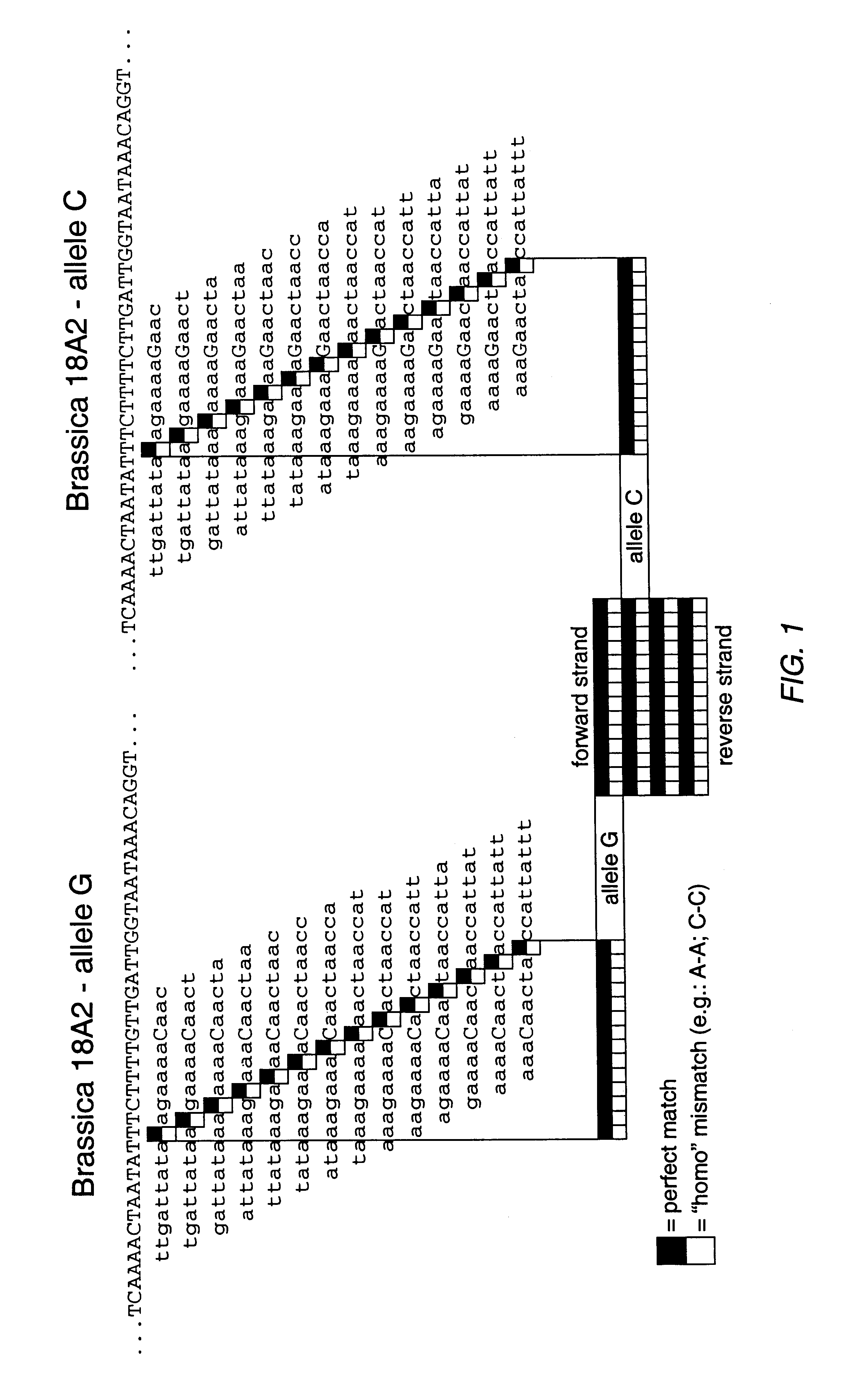Brassica polymorphisms
a technology of brassica and polymorphisms, applied in the field of brassica polymorphisms, can solve the problems of paucity of polymorphisms, defective or variant protein expression, and lethal disadvantage of variant forms
- Summary
- Abstract
- Description
- Claims
- Application Information
AI Technical Summary
Benefits of technology
Problems solved by technology
Method used
Image
Examples
Embodiment Construction
As noted above, the sequences in Table 1 were isolated from B. napus and B. oleracea using oligonucleotide primers designed from expressed DNA sequences from Arabidopsis thaliana, a relative of Brassica napus and member of the Cruciferae family. Primers used to amplify B. napus and B. oleracea alleles were selected for an optimal length of 20 bases.+-.2 based such that their melting temperatures were between 60.degree. C. and 65.degree. C. Primers were synthesized on a 20 nmole scale using a high throughput DNA synthesizer capable of producing 96 primers simultaneously in a 96-well format. See Lashkari et al., Proc. Nat. Acad. Sci. 92, 7912-7915 (1995). The primers, which have an average length of 21 bases, were positioned within DNA sequences such that PCR products produced with cDNA templates would range between 100 and 450 bp. As introns in Arabidopsis genes are of modest size, 60% of the 1,920 primers tested on plant DNA gave PCR products.
The components needed for PCR amplificat...
PUM
| Property | Measurement | Unit |
|---|---|---|
| temperature | aaaaa | aaaaa |
| temperature | aaaaa | aaaaa |
| melting temperatures | aaaaa | aaaaa |
Abstract
Description
Claims
Application Information
 Login to View More
Login to View More - R&D
- Intellectual Property
- Life Sciences
- Materials
- Tech Scout
- Unparalleled Data Quality
- Higher Quality Content
- 60% Fewer Hallucinations
Browse by: Latest US Patents, China's latest patents, Technical Efficacy Thesaurus, Application Domain, Technology Topic, Popular Technical Reports.
© 2025 PatSnap. All rights reserved.Legal|Privacy policy|Modern Slavery Act Transparency Statement|Sitemap|About US| Contact US: help@patsnap.com

